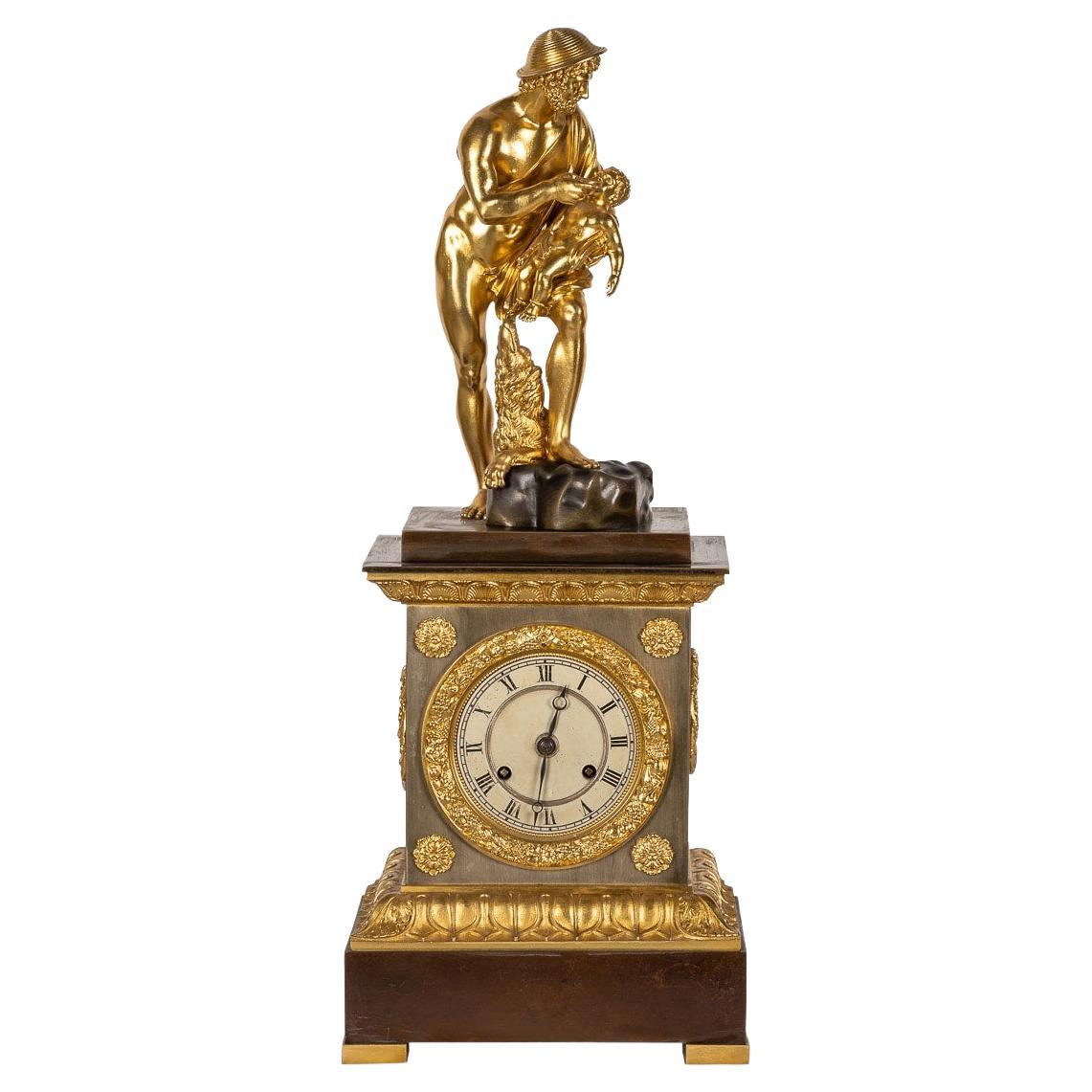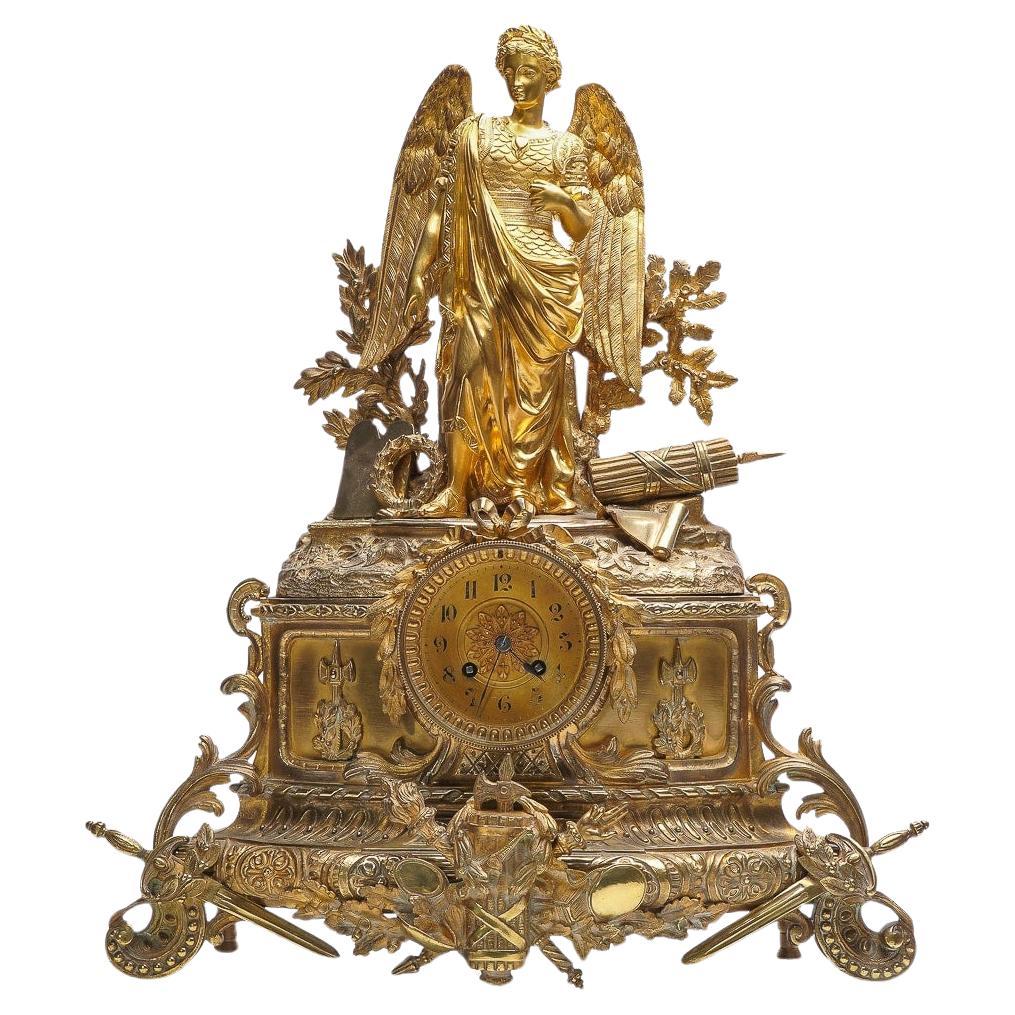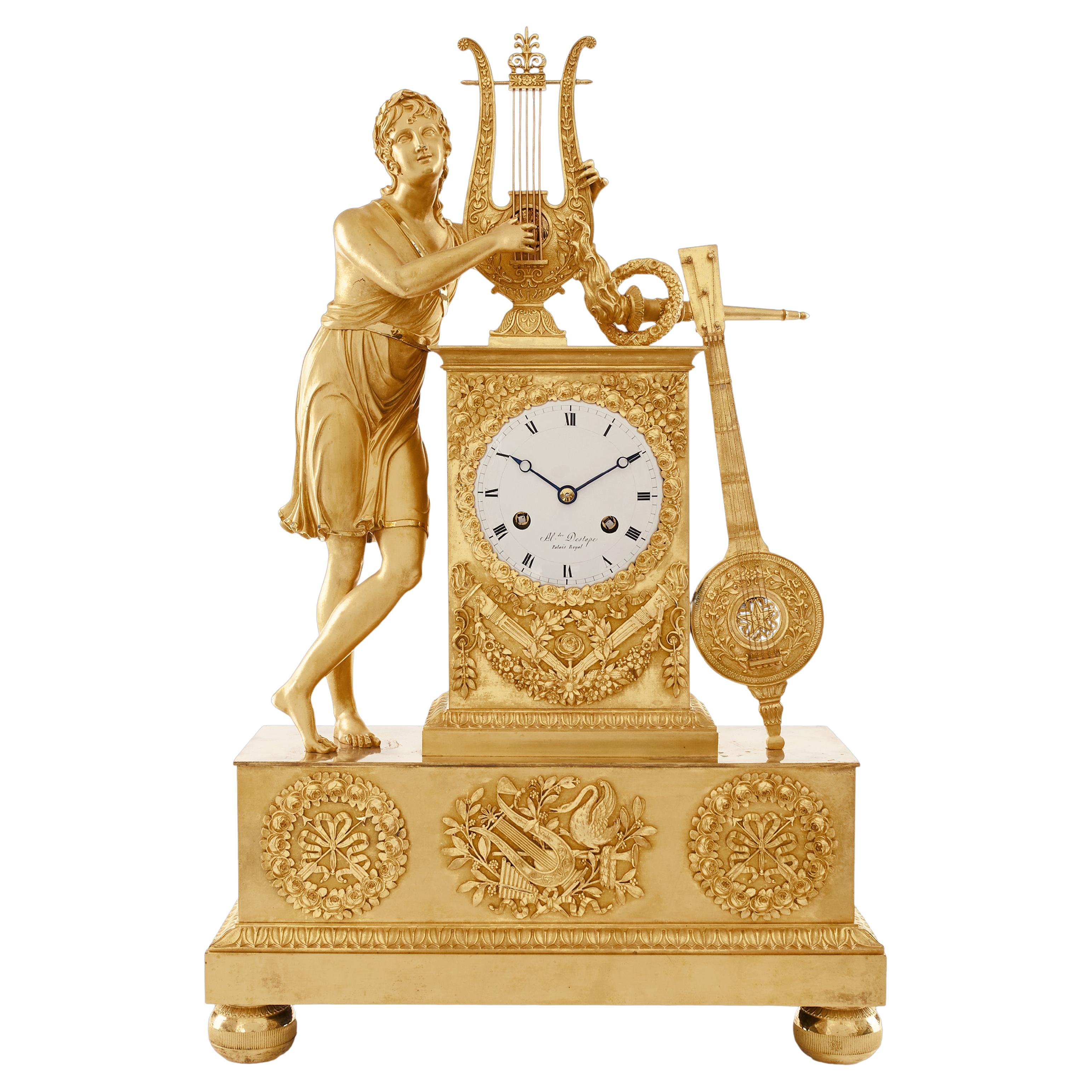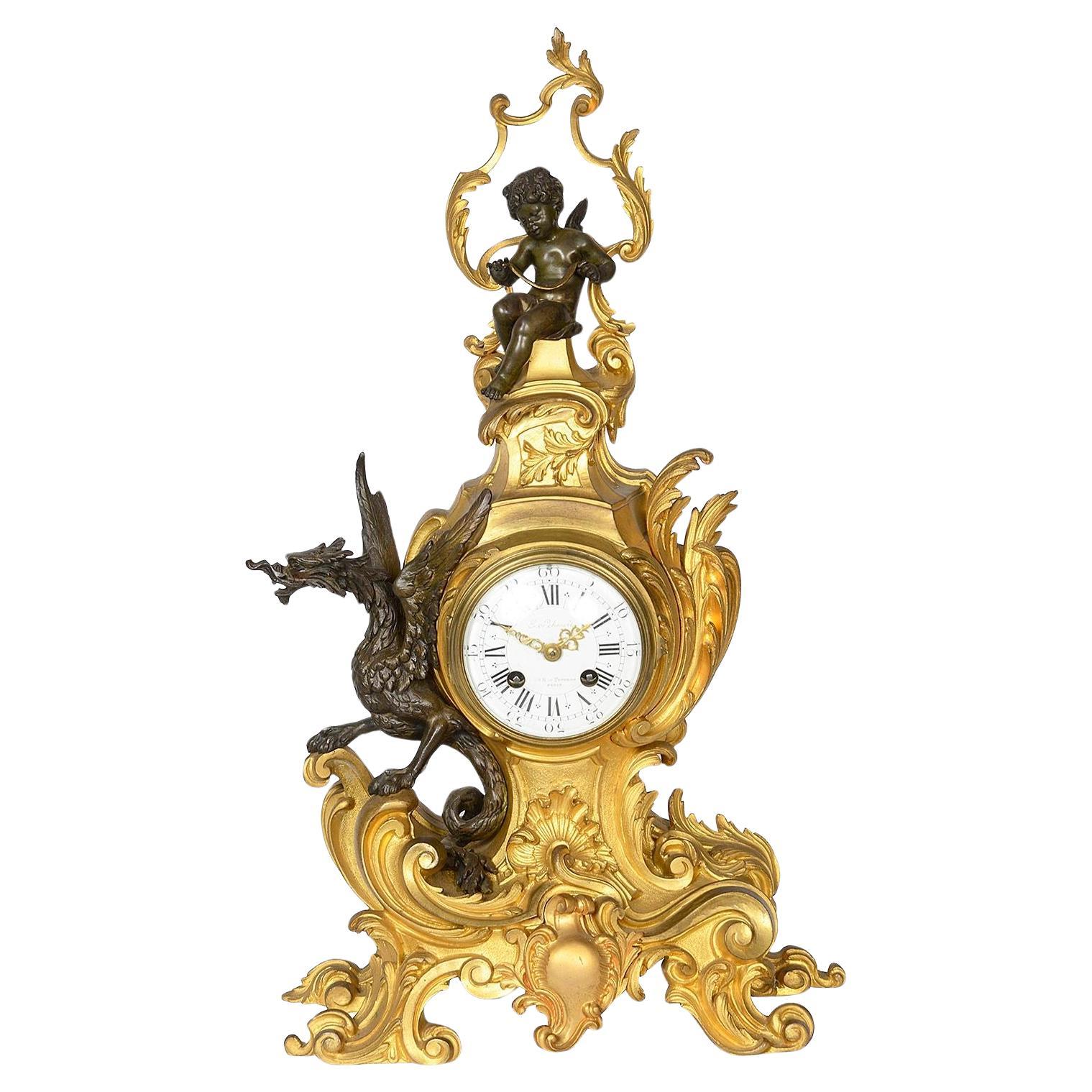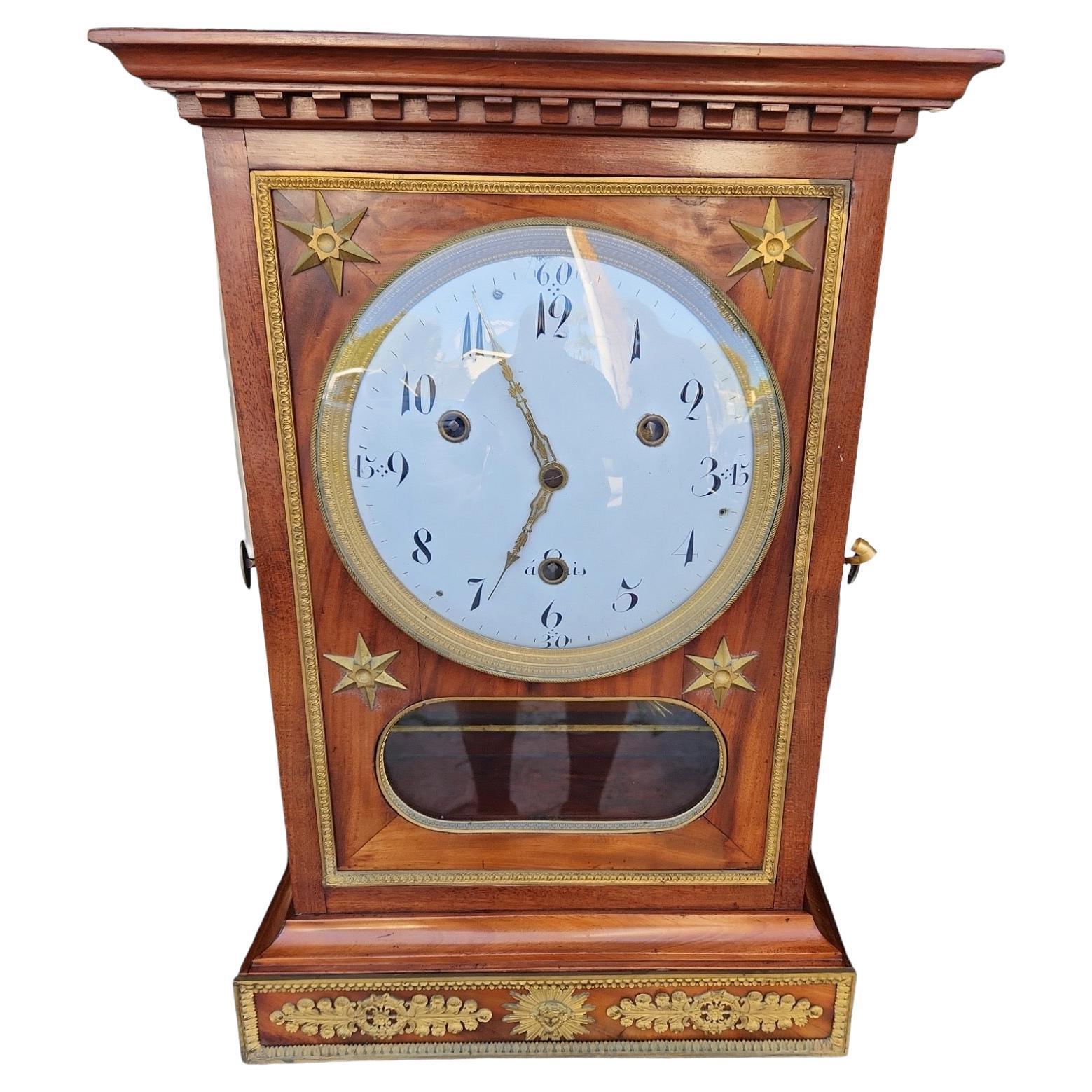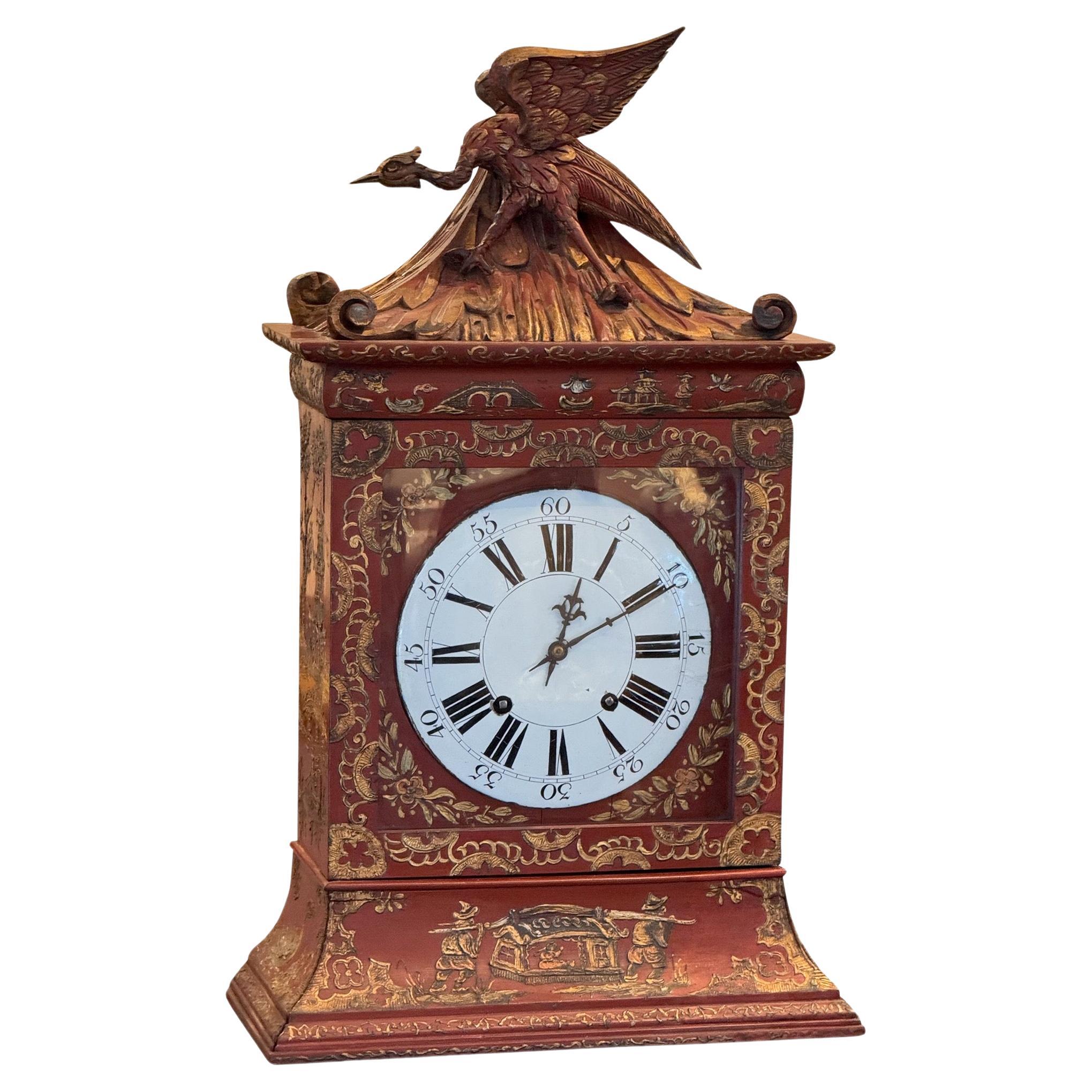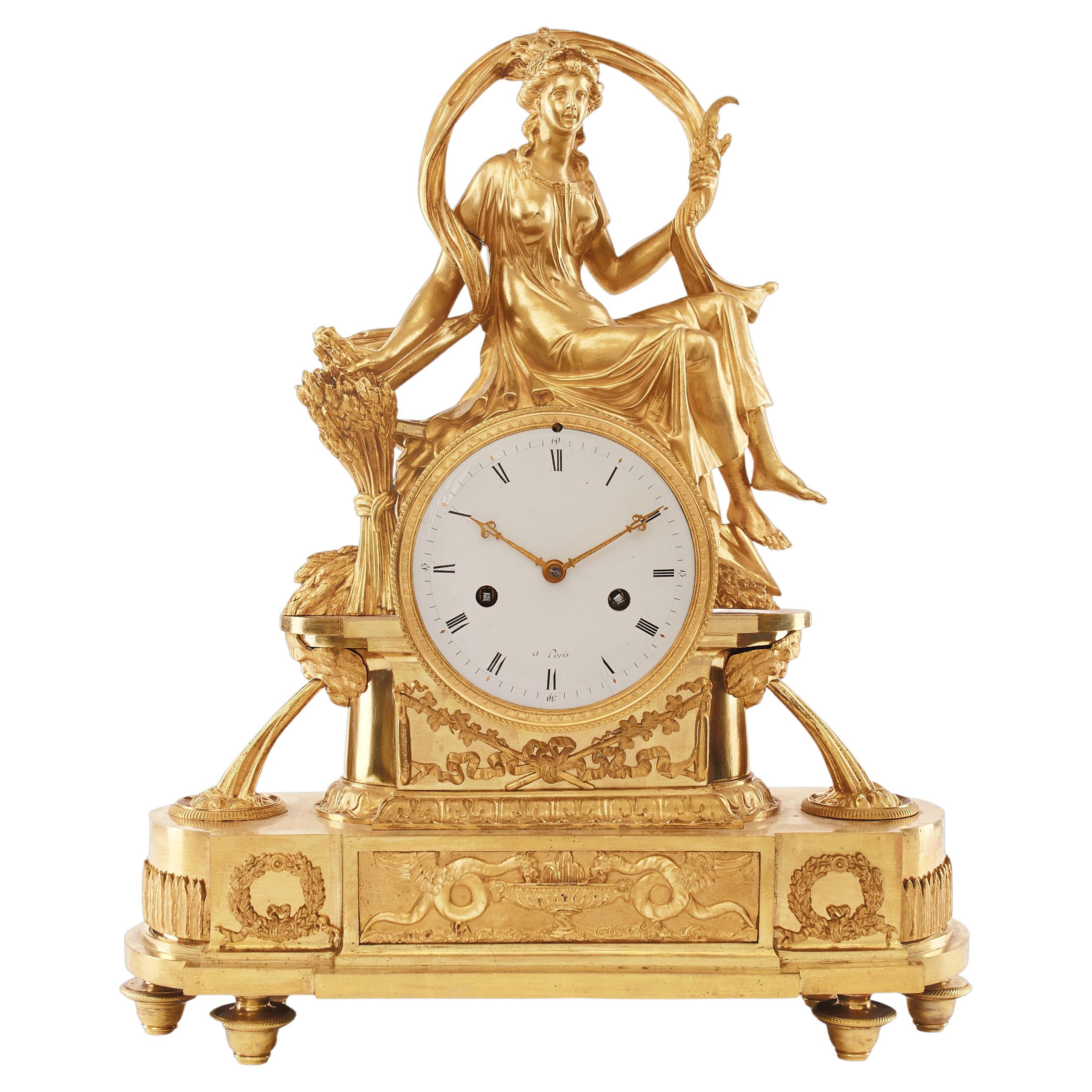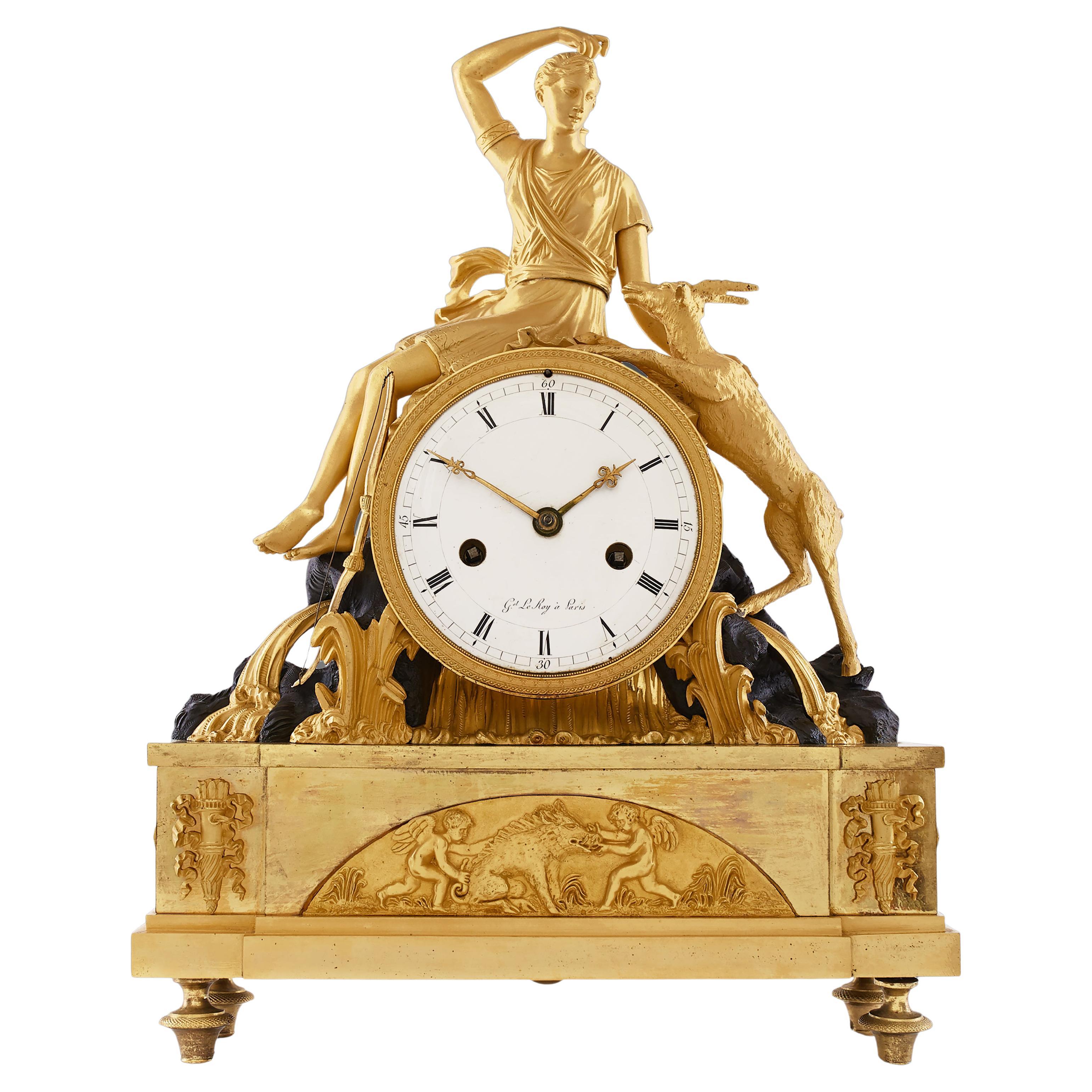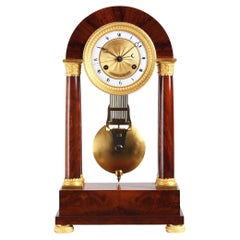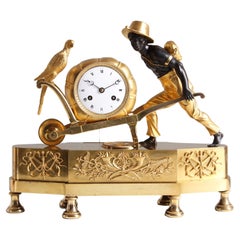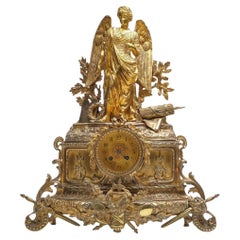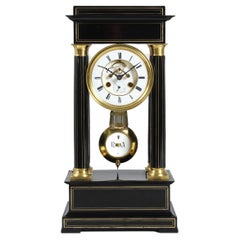
19th Century Portal Mantel Clock with Date and open Escapement, Paris, c. 1870
View Similar Items
Video Loading
Want more images or videos?
Request additional images or videos from the seller
1 of 22
19th Century Portal Mantel Clock with Date and open Escapement, Paris, c. 1870
About the Item
- Dimensions:Height: 19.69 in (50 cm)Width: 10.24 in (26 cm)Depth: 6.3 in (16 cm)
- Materials and Techniques:
- Place of Origin:
- Period:
- Date of Manufacture:1860-1870
- Condition:Refinished. Restored condition of movement and case. The watch runs absolutely reliable and accurate with a running time of circa 14 days.
- Seller Location:Greven, DE
- Reference Number:1stDibs: LU5419232366732
About the Seller
5.0
Platinum Seller
These expertly vetted sellers are 1stDibs' most experienced sellers and are rated highest by our customers.
Established in 2014
1stDibs seller since 2020
More From This SellerView All
- 19th Century Regulator by Tarault Jeune, Precision Portal Clock, Paris, c. 1825Located in Greven, DETable regulator - Precision portal clock Paris mahogany, bronze, enamel around 1825 Dimensions: H x W x D: 49 x 28 x 15 cm Description: Antique precision portal clock from the 182...Category
Antique 1820s French Restauration Table Clocks and Desk Clocks
MaterialsBronze, Enamel
- Early 19th Century Mantel Clock, Firegilt Bronze, Paris circa 1810Located in Greven, DEVery rare "Au Bon Sauvage" mantel clock France Fire-gilt and patinated bronze Empire around 1810 Dimensions: H x W x D: 34 x 41 x 13 cm Description: Extremely rare French bronze m...Category
Antique Early 19th Century French Empire Mantel Clocks
MaterialsBronze
- Early 19th Century Ormolu Mantel Clock, Atala freeing Chactas, Paris, circa 1810Located in Greven, DEMantel Clock "Atala and Chactas" Paris Bronze (fire-gilt and patinated), enamel Empire around 1810 Dimensions: H x W x D: 40 x 32 x 11 cm Description: Very rare and extremely high quality French mantel clock, so-called Pendule Au Bon Sauvage. Depicted are scenes from the love story "Atala or the love of two savages in the desert" written by Francois René Vicomte de Chateaubriand in 1801. At the beginning of the 19th century, this was probably the most famous love story in Europe, but today it has been forgotten. The story, set in present-day Louisiana (USA), is roughly rewritten about the forbidden love between Chactas, a young Indian, and Atala, the beautiful daughter of a Spaniard. Chactas is captured in a battle between two Indian tribes, chained to a palm tree and is to be sacrificed. Atala wants to save his life and convert him to Christianity. She unties him from the palm tree at night and they flee together into the wilderness of North America. Their love for each other grows stronger and stronger and they have prospects for a future together. The story takes a tragic turn when Atala, who must remain a virgin due to a vow made by her mother, can no longer withstand the conflict of her feelings and commits suicide. The main group of characters thus shows Chacta's liberation through Atala. Atala is leaning against a pile of logs. The animal fur thrown over the logs and the weapons leaning against the stack on the right give the impression of a night camp. The bronze is of rarely beautiful quality, finely chiselled and makes the scene appear very lively. The contrast of fire-gilded and patinated bronze adds tension to the composition. In the base we see the Entombment as the end of the tragic love story. This bronze work is also very detailed, the interplay of bright and matt gilding makes the flat relief appear much deeper than it is. The depiction of the mantel clock presented here shows that the exotic was only known from stories and that the bronzier had his own ideas about the appearance of this distant world. The Indian, for example, has very European facial features and his skin was not black in reality, of course. The palm tree was also certainly not found in the North American wilderness. The heart of the clock is a French pendulum movement, integrated into the wooden pile, with an eight-day power reserve and a lock plate striking a bell on the half and full hour. The pendulum is suspended on a thread, typical of the period. The classically shaped hands, so-called Breguet hands, are also typical of the time. The enamelled dial has black Roman hour numerals, Arabic quarter hours and bears the signature: Le Roy hr. de Madame A PARIS. Interesting facts: The period from 1795 to about 1815 saw the creation of probably the most spectacular group of bronzes: The "Au bon Sauvage" pendulums - depictions of the "Noble Savage". Today's viewers react to these objects with both fascination and irritation. Enthusiastic on the one hand about the obvious quality of the detailed bronzes and the allure of the exotic, on the other hand distanced and cautious because of the possible discrimination that is suspected behind them. The ambivalence of this feeling motivates the search for the conditions of origin of these pendulums. Europeans found their new ideal of the natural man primarily in fictional and realistic travelogues about the Indians of North America...Category
Antique Early 19th Century French Empire Mantel Clocks
MaterialsOrmolu
- 19th Century Mantel Clock "Astronomy", France circa 1830Located in Greven, DEAntique mantel clock on the theme of astronomy France Bronze Charles X around 1830 Dimensions: H x W x D: 48 x 19 x 10 cm Description: Unusual and beautifully crafted bronze mante...Category
Antique 19th Century French Charles X Table Clocks and Desk Clocks
MaterialsBronze
- 19th Century French Ormolu Mantel Clock, circa 1840Located in Greven, DE19th Century French mantel clock France (Limoges) Ormolu around 1840 Dimensions: H x W x D: 37 x 22 x 10 cm Description: The bronze, cast in relief and then fire-gilded, stands on...Category
Antique 1830s French Charles X Mantel Clocks
MaterialsMarble, Bronze, Ormolu
- Swiss Mantel Clock, Barometer, Moon Phase and Perpetual Calendar, 19th CenturyBy Aubert & KlaftenbergerLocated in Greven, DE19th century mantel clock with moon phase and perpetual calendar Switzerland, England slate, enamel circa 1870 Dimensions: 41 x 37 x 19 cm Description: Slate case with wi...Category
Antique 1870s Swiss Napoleon III Mantel Clocks
MaterialsSlate
You May Also Like
- 19th Century Mantel ClockBy Royal Vienna PorcelainLocated in Brighton, SussexA good quality 19th century Vienna porcelain mantel clock. Each of the porcelain panels depicting classical scenes, set in gilded ormolu. The clock being an eight-day movement and ch...Category
Antique 19th Century Austrian Mantel Clocks
MaterialsPorcelain
- 19th Century French Empire Style Ormolu Bronze Mantel Clock, c.1870Located in Royal Tunbridge Wells, KentAntique 19th Century French Empire style ormolu bronze mantle clock. The foliate surround gilt dial, Inside with eight day movement with strike on bell. The top mounted with a figure...Category
Antique 19th Century French Mantel Clocks
MaterialsBronze, Ormolu
- 19th Century French Empire Style Bronze Mantel Clock, circa 1870Located in Royal Tunbridge Wells, KentAntique 19th century French Empire style gilt bronze mantle clock. The foliate and fruit engraved gilt-brass dial with enamel painted roman numerals. Inside with eight day movement w...Category
Antique 19th Century French Empire Mantel Clocks
MaterialsBrass, Bronze, Enamel
- 19th Century Boulle Mantel ClockBy Payne and Co. 1Located in Brighton, SussexA very good quality 19th century French boulle mantel clock with wonderful scrolling foliate ormolu mounts to the surround, brass inlay to the red tortoiseshell. White enamel roman n...Category
Antique Late 19th Century French Louis XVI Mantel Clocks
MaterialsTortoise Shell
- 19th Century French mantel clockLocated in Brighton, SussexA very good quality late 19th Century French gilded ormolu and patinated bronze mantel clock, having a seated cherub holding the rains of a winged dragon pulling a scrolling foliate ...Category
Antique 1880s French Louis XVI Mantel Clocks
MaterialsOrmolu
- Bronze Mantel Clock, 19th CenturyLocated in Madrid, ESTable clock. Marble and bronze, 19th century. Table clock with Paris box machinery made of marble and bronze and with porcelain plates applications with roc...Category
Antique 19th Century European Neoclassical Mantel Clocks
MaterialsBronze, Other
Recently Viewed
View AllMore Ways To Browse
Antique Furniture Dating
Dating Antique Furniture
Date Antique Furniture
Dating Antique French Furniture
Dating Antique Tables
Day Date Time
Day Date And Time
Open Bezel
Ring Dial
Dating Antique Desks
Antique Date Stamp
Ebonised Wood
Column Clock
Antique Brass Back Plate
Dating Antique Clocks
Antique Brass Pendulum
Antique Clock Escapements
Reading Desk

